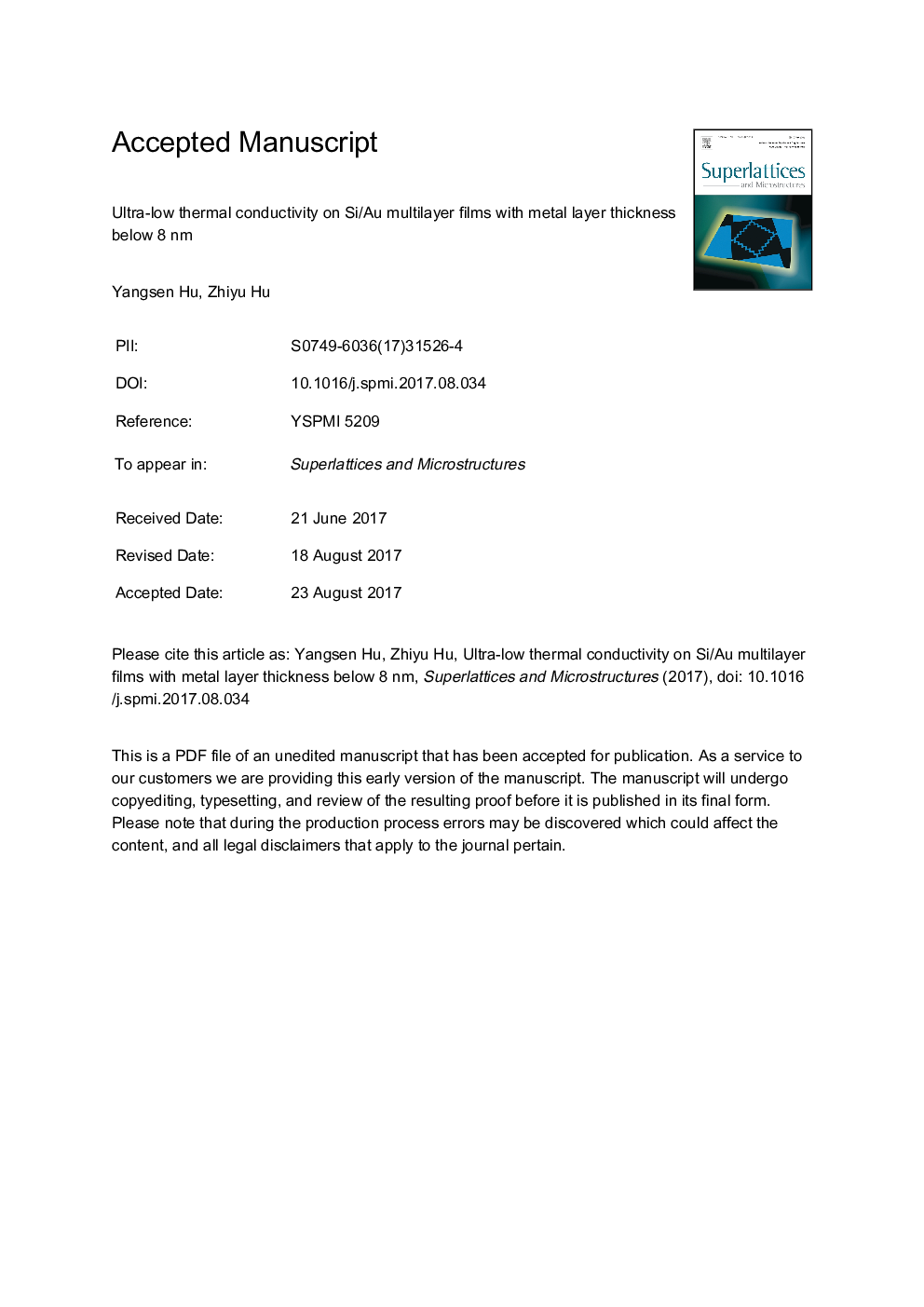| Article ID | Journal | Published Year | Pages | File Type |
|---|---|---|---|---|
| 7940197 | Superlattices and Microstructures | 2017 | 17 Pages |
Abstract
Nanoscale heat conduction with ultra-low thermal conductivity across metal-nonmetal Si/Au multilayer films has been investigated. Si/Au multilayer films with different Au thickness were prepared by magetron sputtering, of which the multilayer structures were confirmed by grazing incidence small angle X-ray scattering (GISAXS) and field emission scanning electron microscopy (FESEM). Moreover, the cross-plane thermal conductivities of the films deposition were investigated by a differential 3Ï method at room temperature. It is possible that we can control thermal transport across multilayer films by constructing ultrathin Au layers. The reduced thermal conductivity (â¼0.6 Wmâ1Kâ1) of multilayer films with Au thickness of 1Â nm is â¼50% of that with Au thickness above 8Â nm and 42% of amorphous Si film (1.44 Wmâ1Kâ1). The result is attributed to the low contribution of phonons to the overall thermal conductivity in ultrathin Au layer (below 8Â nm), leading to a relatively high film thermal resistances compare to thicker Au layer due to strong electron-phonon coupling at metal-nonmetal interfaces. Meanwhile, experimental results show excellent agreement with two temperature model over 8Â nm but not below 8Â nm. It can be found that conventional thermal conducitvity models fail to explain the observed thermal conducitvity tendency as a function of intercalating metal layer thickness. Accordingly, a revised two temperature model (TTM) has been proposed, which shows well agreement with experimental results. The results provide us with more insight about the thermal transport mechanism of the heterogeneous multilayer system, and would give more instruction for next-generation thermoelectric material development.
Related Topics
Physical Sciences and Engineering
Materials Science
Electronic, Optical and Magnetic Materials
Authors
Yangsen Hu, Zhiyu Hu,
